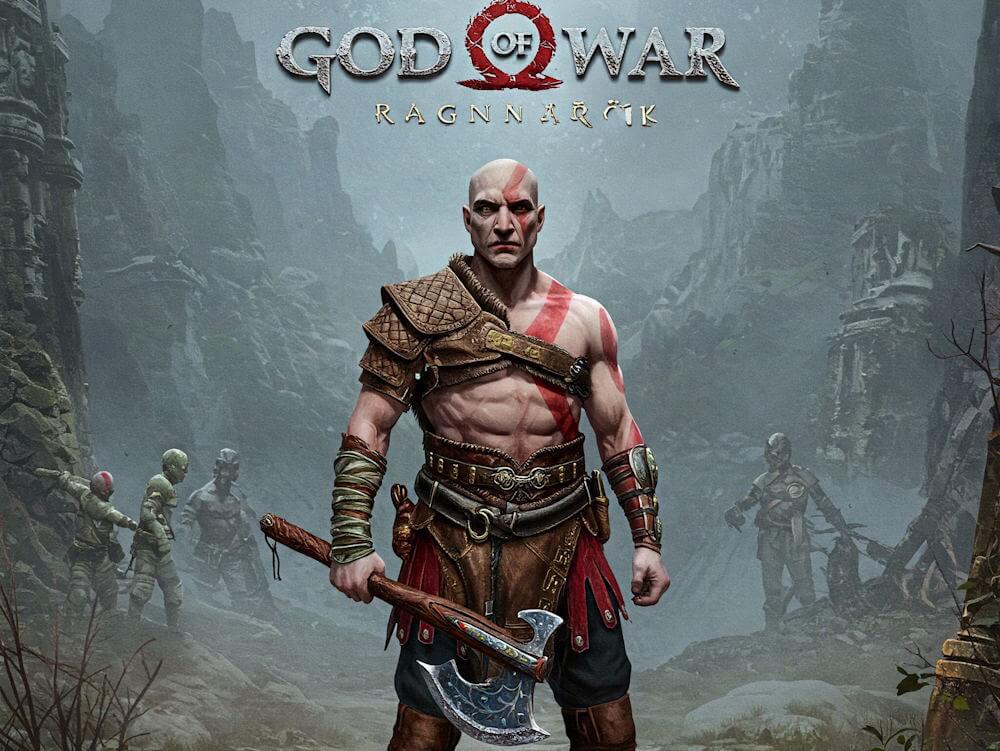‘Trek to Yomi’ embarks on a mesmerizing journey that intricately weaves together visual artistry and thought-provoking gameplay. Set against the backdrop of feudal Japan, the game captures the essence of this historical period while serving as a tribute to the iconic samurai films that have defined the genre. The storyline follows the life of Hiroki, a young Samurai whose dedication to protecting his village leads him through a series of trials that test his resolve, loyalty, and the very essence of honor.
The visual aesthetic of ‘Trek to Yomi’ is nothing short of breathtaking, as it mirrors the grandeur and artistry of classic black-and-white films. Its cinematic presentation employs a carefully crafted combination of cinematographic techniques that draw players into a world imbued with both beauty and peril. The game’s artistic direction is heavily influenced by traditional Japanese art, leading to engaging environments that enhance immersion. Every frame is designed to evoke emotion, allowing players to truly feel the weight of their decisions alongside Hiroki.
Moreover, the themes of loss, sacrifice, and the quest for redemption permeate the gameplay experience, resonating deeply with players. As players navigate through a land filled with both ethereal and harsh realities, they will encounter not only enemies but also internal struggles reflecting the complexity of the human condition. The game operates on multiple levels, making it more than a mere action-adventure title; it serves as a narrative exploration of the samurai ethos.
In ‘Trek to Yomi’, homage is paid not just to the samurai but to the visual art form itself, creating a unique gaming experience that stands out in contemporary video game culture. Through its combination of stunning visuals and profound themes, the game invites players to explore the richness of its world while challenging them to reflect on their own values and choices.
The Visual Aesthetics of Trek to Yomi
‘Trek to Yomi’ presents an exceptionally striking visual experience that stands out significantly in the current gaming landscape. The developers have opted for a black-and-white aesthetic that pays homage to classic samurai cinema, employing a visual style that is both minimalist and deeply impactful. This choice shapes the entire narrative, drawing players into a world that feels both timeless and immediate. The monochromatic palette not only enhances the emotional depth of the story but also serves to create a stark contrast between light and shadow, enriching the atmospheric tension throughout the gameplay.
The game’s graphics are intricately designed, focusing on details such as texture and lighting to evoke a cinematic feel reminiscent of traditional Japanese film. Environments are carefully constructed, reflecting a blend of reality and artistic interpretation, which allows players to explore a richly detailed world while remaining engaged with the game’s central themes of honor and sacrifice. The use of silhouettes and dramatic angles adds to the overall presentation, each frame inviting players to ponder the underlying narratives that unfold before them.
Artistic choices, such as framing techniques and camera movements, further immerse players in the emotional weight of the protagonist’s journey. With every encounter, players experience not just combat but the heavy burden of decisions made along the way, amplified by the high-contrast visuals. The unique art direction not only supports the overarching narrative but amplifies the mood, creating a haunting backdrop for the player’s adventure. In crafting a visual experience that marries art and gameplay, ‘Trek to Yomi’ invites players to witness an artistic representation that is as formidable as it is beautiful.
Storytelling and Narrative Structure
Trek to Yomi presents a compelling narrative that elegantly intertwines storytelling techniques with engaging gameplay. At its core, the game follows the journey of Samurais, delivering a poignant narrative steeped in themes of honor, sacrifice, and the weight of duty. The storytelling is largely linear, guiding players through a carefully crafted world that reflects the protagonist’s internal and external struggles. This linear narrative structure is intentionally designed to mirror a cinematic experience, inviting players to immerse themselves in the unfolding drama.
Character development plays a crucial role in fostering emotional connections with the audience. The protagonist, underlined by complex motivations, is portrayed with depth that resonates with players. Each character, from allies to antagonists, is intricately developed through well-placed dialogue, allowing players to gain insight into their motivations and conflicts. This dimensionality not only enriches the gaming experience but also invites reflection upon the consequences of each character’s choices, enhancing the narrative’s emotional impact.
Moreover, the dialogue within Trek to Yomi serves as a narrative device that further connects the players to the unfolding story. Each exchange is thoughtfully crafted, revealing character traits and advancing the plot without overshadowing the gameplay experience. The dialogue’s pacing is aligned with the gameplay mechanics, fostering a seamless integration that allows for storytelling progression without compromising the immersive nature of the action and exploration elements.
This careful balance of narrative structure, character development, and dialogue ensures players remain engaged from the onset. Trek to Yomi thus not only serves as an interactive experience but as a narrative art form, effectively illustrating the interplay between story and gameplay. The game’s storytelling techniques undeniably contribute to its status as a thoughtful exploration of deep themes within the framework of a visually striking and challenging adventure.
Gameplay Mechanics Overview
‘Trek to Yomi’ offers a unique blend of gameplay mechanics that significantly heighten the player experience. At its core, the game revolves around a meticulously designed combat system that combines fluid mechanics with a range of move sets. Players are presented with a variety of martial arts techniques, emphasizing precision and strategy in every encounter. The combat fosters engagement as players learn to counter and chain attacks, encouraging a more thoughtful approach to action without devolving into mindless button mashing.
Moreover, the game allows for dynamic interactions with the environment. Exploration is integral to the gameplay, inviting players to traverse beautifully rendered landscapes that reflect the game’s artistic vision. By encouraging players to wander off the beaten path, ‘Trek to Yomi’ rewards curiosity with hidden collectibles and lore, enriching the narrative and providing insight into the world. Each area is designed with layered verticality and various pathways, prompting players to think critically about their routes and approaches.
In addition to combat and exploration, puzzle-solving features are woven seamlessly into the gameplay. These puzzles often require players to engage with mechanics that draw on environmental cues or require manipulation of objects within the game. Whether it involves deciphering ancient scripts or navigating complex mazes, these features offer a welcomed contrast to combat, allowing players to slow down and immerse themselves in the storytelling aspect. The interaction between combat, exploration, and puzzles creates an engaging loop that keeps players invested, as each element contributes to the overall challenge of the game.
In conclusion, the comprehensive gameplay mechanics of ‘Trek to Yomi’ enhance the immersive experience, inviting players to appreciate the delicate balance between action, exploration, and problem-solving. Each mechanic works in harmony to maintain a consistent level of engagement, ultimately making for a rewarding journey.
Combat System: Pros and Cons
The combat system in “Trek to Yomi” serves as a fundamental component of the overall gaming experience, drawing players into its richly crafted world through both engagement and challenge. One of the significant strengths of the combat mechanics is their responsiveness. Players are often pleased by the clarity of the controls, which allows for fluid movement and skilled execution of attacks. The simplicity in button mapping fits the aesthetic and design philosophy of the game, making it approachable for newcomers to the genre while still providing depth for more seasoned players.
Another positive aspect of the combat system is the stylish visual presentation, which is intertwined with the gameplay. The animations of character movements and the art style enhance the immersion within the narrative. Each encounter feels momentous, thanks in part to the atmospheric graphics that set the tone for battles. Additionally, the variety of techniques that players can employ during combat leads to a satisfying layer of strategy, allowing for different styles to emerge depending upon player choices. Utilizing a combination of parries, dodges, and specific attack combos becomes integral to mastering the system.
Environmental Storytelling and Design
The game “Trek to Yomi” ingeniously employs environmental storytelling to create an immersive experience that captivates players from the outset. The landscapes and settings within the game are meticulously crafted to not only provide aesthetic pleasure but also to convey layers of narrative through design. Each location reflects an integral part of the story, inviting players to engage more deeply with the unfolding events and the characters’ journeys. For instance, the use of traditional Japanese architecture and serene natural surroundings vividly illustrates the cultural backdrop that influences the protagonist’s challenges.
As players traverse through diverse environments—from tranquil temples to ominous forests—the design elements serve as evocative storytellers. Textures, colors, and architectural details harmonize to reflect the underlying themes of conflict and serenity. The contrasts in these settings not only enhance visual engagement but also articulate emotional experiences, compelling players to reflect on the protagonist’s struggles and growth. The implementation of weather effects, such as rain or fog, further amplifies the narrative tension while simultaneously affecting gameplay mechanics. This dynamic interaction enhances the overall mood, drawing players into a world that feels alive and responsive.
Moreover, careful attention to the placement of items and environmental clues subtly guides players toward understanding the lore and history of the game’s universe. Abandoned villages, remnants of past battles, and sacred objects tell their own stories, enriched by the environments in which they reside. Each corner of the game world invites exploration, rewarding players with insights that are not overtly stated but rather inferred through observation. This harmonious blend of gameplay and environmental storytelling creates an experience where players are encouraged to immerse themselves in every detail, culminating in a profound sense of connection with the artistic vision behind “Trek to Yomi.”
Performance and Technical Stability
The technical performance of ‘Trek to Yomi’ has been a significant aspect that players and critics have discussed extensively. As with many contemporary video games, players expect a level of frame rate stability and graphical fidelity that can significantly enhance their immersive experience. Unfortunately, ‘Trek to Yomi’ does present certain performance challenges that are important to explore. Players have reported instances of frame rate drops, particularly during intense gameplay moments or when numerous assets are loaded simultaneously. Such fluctuations can detract from the overall flow of the game, making it harder for players to maintain focus during critical sequences where precision is paramount.
Graphical glitches also contribute to the game’s technical stability concerns. Textures may not load correctly in some instances, resulting in visual anomalies that momentarily detach players from the game’s meticulously crafted environment. These technical shortcomings can be frustrating, especially for those who appreciate the unique art style that ‘Trek to Yomi’ aims to convey. The aesthetic choices made by the developers are designed to create an atmospheric experience, and interruptions due to performance issues can disrupt this intent.
While some players may overlook these challenges in favor of the game’s artistic narrative and engaging gameplay, others find that they significantly impact their overall enjoyment. A polished sense of performance is crucial in modern gaming, where players invest both time and emotional energy. Ultimately, addressing frame rate stability and graphical glitches is essential for creating a seamless experience in ‘Trek to Yomi,’ allowing players to fully immerse themselves in its visual art and thematic storytelling. As the game evolves through patches and updates, it remains to be seen how effectively these performance issues will be resolved.
Comparison to Other Indie Games
Trek to Yomi emerges as a distinctive title within the indie gaming scene, showcasing a blend of artistic direction, gameplay style, and narrative depth that sets it apart from its contemporaries. The game’s aesthetic draws heavily from classic samurai films and traditional Japanese art, much like titles such as *Ghost of Tsushima* and *Sifu*, which also highlight Japanese cultural themes. However, unlike these games that often incorporate expansive open worlds, Trek to Yomi embraces a linear gameplay approach, creating a focused experience that resonates with players seeking a narrative-driven adventure.
In terms of gameplay mechanics, Trek to Yomi demonstrates a balance of action and strategy similar to other indie games like *Hollow Knight* and *Celeste*. Both games are lauded for their challenging gameplay and attention to detail. However, while *Hollow Knight* immerses players in a metaphorical world through its atmospheric exploration, Trek to Yomi channels its challenges through combat mechanics steeped in a rhythmic and deliberate approach, enhancing its immersive narrative experience. The combat system invites players to engage thoughtfully, a quality that invites comparison to the gameplay philosophies evident in smaller indie titles.
Furthermore, the narrative depth in Trek to Yomi stands out as a reflection of personal and cultural themes, paralleling the storytelling efforts of games like *Gris* and *Journey*, which also prioritize emotional engagement. While many indie games foreground the player’s emotional journey through abstract themes, Trek to Yomi anchors its story in the historical context of samurai honor and sacrifice, setting a tone that is both poignant and reflective. In juxtaposition with its peers, Trek to Yomi contributes richly to the indie game narrative landscape, establishing itself as an essential part of the ongoing evolution in gaming artistry and storytelling.
Conclusion: A Double-Edged Sword
As we draw our exploration of ‘Trek to Yomi’ to a close, it is essential to underscore the game’s dual nature, much like the protagonist’s journey itself. On one side, we see a visual masterpiece that captivates players with its artistry and immersive storytelling. The game’s aesthetic draws heavy inspiration from traditional Japanese cinema, resulting in beautifully crafted environments, meticulous attention to detail, and a monochromatic palette that sets a mood indicative of classic samurai films. This dedication to visual art transcends mere graphics, sculpting a vivid landscape that enhances the narrative experience.
However, alongside this exceptional artistry lies a set of gameplay challenges that cannot be overlooked. Players have reported instances of uneven mechanics and frustrating controls that disrupt the flow of combat. This disparity raises questions about whether the dazzling visuals can compensate for moments of gameplay inconsistency. While many may find the challenges to be a compelling part of the gaming experience, others might perceive them as a source of frustration that detracts from the enjoyment of the game’s artful narrative.
Ultimately, ‘Trek to Yomi’ offers a rich tapestry of visual storytelling paired with a complexity of gameplay that may resonate differently with each player. Those who prioritize artistic expression may find themselves enchanted by its visual cues, whereas players seeking fluid and responsive gameplay may experience disappointment. Thus, it’s crucial for potential players to weigh these factors carefully. ‘Trek to Yomi’ is a game that invites reflection on the balance between artistic ambition and gameplay execution, ultimately challenging players to decide what they value most in their gaming experiences.




